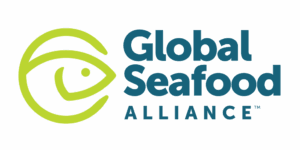Aquaculture
Content developed by Global Seafood Alliance and FishWise


Aquaculture and Labor Rights
Aquaculture employs over 22 million people, according to the 2024 Food and Agricultural Organization (FAO) The State of the World Fisheries and Aquaculture report. The vast majority, 95%, are employed in Asia, with 3% in Africa and 2% in Latin America and the Caribbean. The aquaculture supply chain is complex, but includes hatcheries, feed mills, farms, processing plants, suppliers, and end buyers.
As is common in labor-intensive, low-wage industries, child labor and forced labor are present in the aquaculture industry, and it has, therefore, come under increasing scrutiny for human and labor rights abuses over the past decade.
The U.S. Trafficking in Persons Report references forced labor in seafood in over 50 country narratives. The U.S. Department of Labor’s List of Goods Produced by Child Labor or Forced Labor includes shrimp produced by child labor in two countries and forced labor in three countries. In many of these situations, children are used to feed fish, clean ponds between crops, guard ponds at night after restocking, and accompany their parents to shrimp peeling sheds, where they help improve family earnings or meet piecework quotas.
Child labor and forced labor do not happen in isolation. As other labor rights are eroded, there is a higher risk of forced or child labor. Migrant workers and those who have paid recruitment fees to access work or are not hired directly are at even higher risk of forced labor.
Paying attention to these five areas can help prevent these abuses within Aquaculture supply chains:
Freedom of association: Aquaculture, globally, has low union density, although exact figures are not available. Freedom of association is considered an enabling right. It empowers workers to collectively engage employers to gain other labor rights and improve their working conditions. Research has shown that increased union density in an industry results in improved conditions for nonunionized workplaces.
Living wage: The International Labor Organization reached an agreement on a definition of a living wage during a meeting of experts in 2024. A living wage is “the wage level that is necessary to afford a decent standard of living for workers and their families, taking into account the country circumstances and calculated for the work performed during the normal hours of work.” Paying workers a living wage helps prevent them from sending their children to work. Aquaculture supply chain workers are commonly paid below a living wage.
Risks in preprocessing units: Labor rights abuses in preprocessing units came to international attention through exposés on shrimp peeling sheds in Thailand. Workers involved in preprocessing, including slaughter, beheading, gutting, or shucking, may work in informal, subcontracted, or poorly regulated facilities. They generally work long hours for low pay in precarious employment and typically conduct repetitive tasks in cold and wet environments, which can lead to chronic health issues.
Danger of heat stress: The frequency and intensity of extreme heat events has risen sharply, according to the World Health Organization, which puts workers in the aquaculture supply chain, particularly those who are feeding, harvesting, or maintaining infrastructure on farms, at risk. Prolonged work without adequate shade, hydration, or rest breaks can lead to serious health consequences, including heat exhaustion, heat stress, or even death.
Awareness of diver deaths: Diving in aquaculture presents a significant safety hazard, stemming from a combination of challenging working conditions, inadequate safety protocols, and limited regulatory oversight. Divers perform a number of tasks, including maintaining fish pens, inspecting nets, and removing dead fish. While this is a global challenge, it is particularly acute in the Chilean salmon industry.
To identify, prevent, and mitigate human rights risks, use a structured, proactive approach that aligns with international standards. Many international organizations lead projects to help improve human rights in aquaculture. The International Labour Organization has several projects that have been used to support human rights and labor rights in aquaculture, including the Think.coop and Start.coop projects. Individual countries, like the Philippines, have expressed commitment to supporting labor and human rights in aquaculture.
From a company perspective, identifying human rights risks through desk assessments as well as social audits and certifications, such as the Global Seafood Alliance’s Best Aquaculture Practices, is a way to understand working conditions and related risks in your aquaculture supply chains. Review your procurement practices and encourage long-term contracts and collaborative relationships with your suppliers. Long-term buyer-supplier relationships can play a critical role in advancing decent work in aquaculture by fostering stability, mutual trust, and shared responsibility with your supply chain partners.
You can take these steps as part of implementing a comprehensive human rights due diligence (HRDD) approach. See the three RISE Foundations and the Roadmap for a step-by-step guide to create your program.
Report from Food and Agriculture Organization of the United Nations, Eliminating Child Labour in Fisheries and Aquaculture
United Nations, Guiding Principles on Business and Human Rights
Organization for Economic Cooperation and Development, Guidelines for Multinational Enterprises on Responsible Business Conduct
International Labour Organization (ILO) Tripartite Declaration of Principles Concerning Multinational Enterprises and Social Policy
Oxfam, Emerging Good Practices on Embedding Human Rights in to Seafood Procurement
